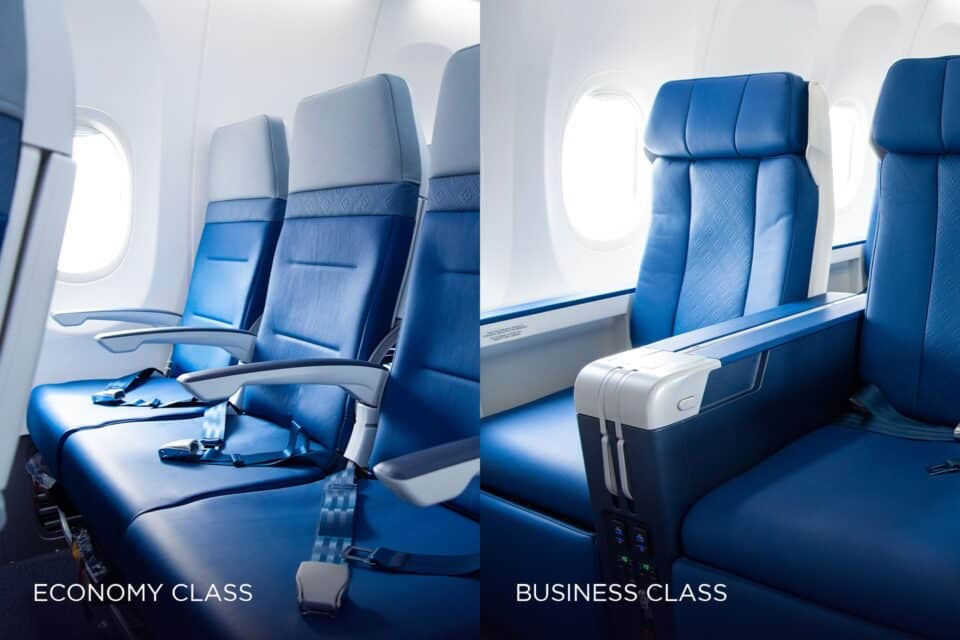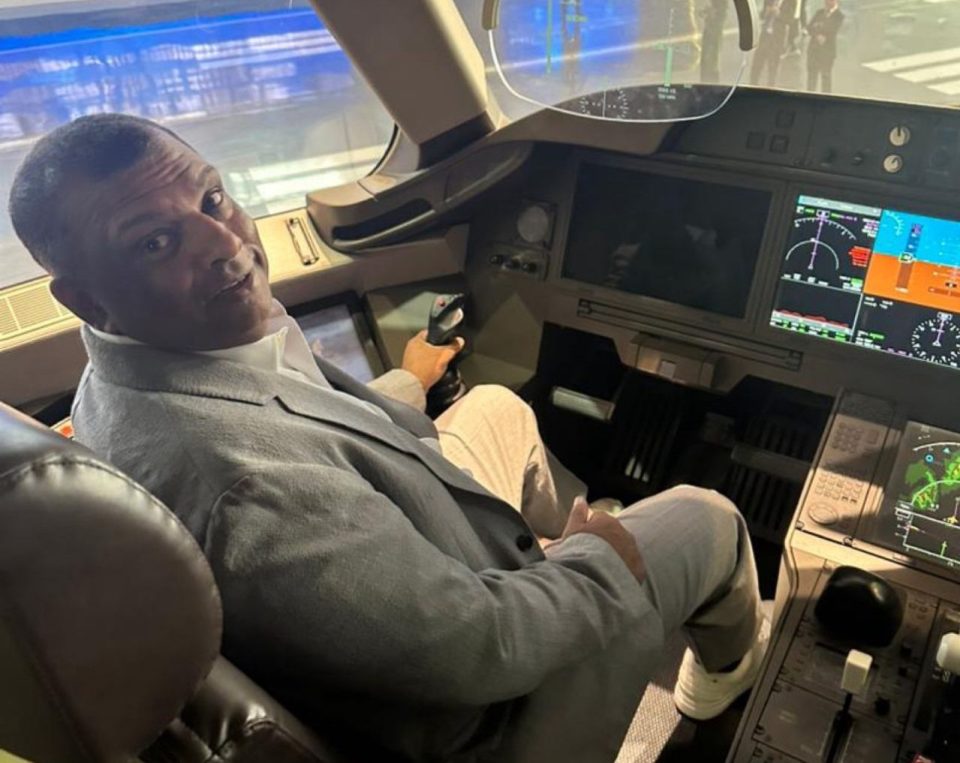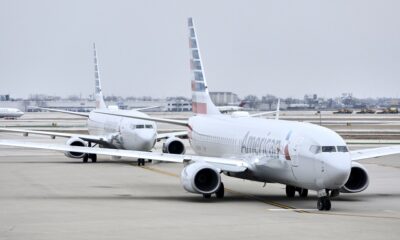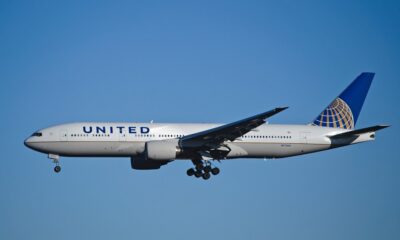Aerospace
Duckworth wants to change how airlines downsize seats.
Bravo: The FAA may impose strict guidelines for airlines that reduce seat size

Sen. Tammy Duckworth of the Democratic Party unveiled legislation on Thursday that would force the Federal Aviation Administration to rethink how it tests aeroplane seats. The Emergency Vacating of Airplane Cabin (EVAC) Act, which is a part of proposed legislation, would require the FAA to investigate the effects of carry-on luggage, elderly passengers, people with disabilities, and children on aircraft evacuation timeframes.
Airlines have been reducing the size of their seats for many years, which prompted Congress to establish new guidelines in 2018 to guarantee that passengers can board and deplane an aircraft in no more than 90 seconds. However, a lot of people have criticized the tests for failing to take things like passengers with disabilities into account.
In testing under conditions that are not representative of real-world situations, Duckworth said, “That worries me.” “Almost every seat on aeroplanes is currently filled when they take off. Because of how modern commercial aviation operates, you cannot just practise evacuating an aircraft that is only 30% full.”
Duckworth, who lost both of her legs while serving in Iraq, doesn’t think she could leave a plane in less than 90 seconds “under the normal settings” she usually travels in.
The FAA said in a statement to CBS News that it is still considering the thousands of public comments on airline seat sizes that it received earlier this year. More than 200 comments including the term “torture” were included in the more than 26,000 submissions the agency received. However, the FAA claims that their testing followed to the standards set forth by Congress.
Malaysia regains US FAA’s Category 1 safety rating(Opens in a new browser tab)
According to studies conducted by the FAA in 2019 and 2020, “seat size and spacing had no detrimental effects on the success of emergency evacuations.” The volunteer passengers in the simulations did have a variety of seat sizes, but they did not have to deal with things like smoke, darkness, or luggage, and they travelled in groups of 60, which was far from a full plane.
Additionally, all participants in the simulations were healthy adults under the age of 60. Steve Dickson, who headed the FAA at the time, conceded that the findings were “helpful” but “not necessarily decisive.” A crowded plane does affect the amount of time it takes for an evacuation, according to consumer advocates and some former airline employees, including Captain Chesley “Sully” Sullenberger, the pilot responsible for the 2009 “Miracle on the Hudson” emergency landing.
“On our flight, it took more than three minutes to get everyone off the plane, in part because the water was quickly filling the aircraft from back to front. But also because it was actuality and our aircraft was full, “added Sullenberger. Airlines declared that safety was their top concern and that they would keep collaborating with the FAA.

Aerospace
India is set to build a central command for the Air Traffic Control system, called ISHAN

India’s air traffic growth has led to increased responsibilities for air traffic control. The Airports Authority of India (AAI) is considering centralizing air traffic control for aircraft, dividing the country into four regions. The goal is to consolidate India’s segmented airspace into a single entity to improve air traffic management (ATM) efficiency, safety, and smoothness.
Recently, the AAI invited expressions of interest to develop a detailed project report for the Indian Single Sky Harmonized Air Traffic Management (ISHAN) initiative in Nagpur. Under this plan, air traffic controllers in Nagpur would handle domestic flights flying above 25,000 feet, eliminating the need for coordination among controllers in different regions.
For domestic regional flights operating above 25,000 feet, control would shift to the central command in Nagpur. This consolidation aims to enhance airline operations, increase flight handling capacity, and reduce congestion and flight times for passengers.
Currently, the AAI provides ATM services over Indian airspace and adjoining oceanic areas, covering over 2.8 million square nautical miles. This airspace is divided into four flight information regions (FIRs) in Delhi, Mumbai, Kolkata, and Chennai, along with a sub-FIR in Guwahati.
FIRs are responsible for providing air traffic services, including weather information, visibility, and search and rescue assistance. The proposed unification under the ISHAN initiative aligns with the projected growth of the aviation industry, which anticipates a doubling of domestic passenger traffic by 2030.
Aerospace
Does AirAsia show interest in Comac aircraft in the future?

Tony Fernandes, CEO of Capital A, operating as AirAsia Group, recently paid a visit to the facilities of COMAC on April 2, 2024, and was thoroughly impressed by what he witnessed.
C919 already securing nearly 1000 orders
COMAC, known for its homegrown aircraft, has launched two promising jets: the ARJ21 and the C919 aircraft. Both aircraft are gaining popularity in the Chinese market, with the C919 already securing nearly 1000 orders from various airlines.
Fernandes expressed his admiration for COMAC’s achievements in aircraft manufacturing, acknowledging the immense challenge it entails. His visit underscored the realization that AirAsia now has a viable third option when it comes to selecting aircraft for its fleet.
During his tour, Fernandes was delighted by the innovation and technology evident in COMAC’s aircraft production and the company’s commitment to long-term partnerships.
He noted that many Western companies have shifted away from prioritizing loyalty and customer service, opting instead for short-term gains and a narrow definition of success.
Last month, COMAC embarked on an international tour, showcasing demonstration flights to neighboring countries, particularly Indonesia and Malaysia. Fernandes believes that the positive impression left by COMAC during his visit opens up new opportunities for collaboration.
Fernandes emphasized COMAC’s remarkable achievements
The shared values of loyalty, customer service, and long-term vision align closely with AirAsia’s ethos, making collaboration with COMAC appealing. With a focus on innovation and excellence, both companies stand to benefit from a partnership grounded in trust and a shared commitment to success.
Indonesia and China have already collaborated in validating and maintaining the airworthiness of the ARJ21 aircraft, indicating a solid foundation for future partnerships.
In his statement, Fernandes emphasized COMAC’s remarkable achievements and genuine desire for long-term partnership, highlighting the absence of ego and a genuine willingness to succeed together. He marveled at COMAC’s fully automated, AI-driven factory, a testament to their dedication to innovation and efficiency.
Fernandes criticized Western firms for prioritizing short-term gains over loyalty, customer service, and long-term strategy, emphasizing the importance of understanding customers’ needs and collaborating to achieve success.
Aerospace
Indigo will soon launch Air Taxi Service in India

InterGlobe Enterprises, the parent brand of IndiGo, is set to revolutionize travel in India with its upcoming air taxi service.
Scheduled for a potential launch in 2026, this innovative venture promises a seamless journey for passengers between two bustling hubs. Delhi and Gurgaon in Haryana. The forthcoming service is projected to revolutionize the daily commute, offering passengers a swift aerial journey covering the distance in a mere 7 minutes.
This remarkable efficiency contrasts starkly with the conventional 90-minute drive, underscoring the immense time-saving potential for commuters. The anticipated fare, ranging from Rs 2,000-3,000, makes this innovative mode of transport not only swift but also remarkably competitive in pricing.
At the heart of this ambitious endeavor lies a strategic partnership with Archer Aviation, a pioneer in electric vertical takeoff and landing (eVTOL) aircraft technology. Under this collaboration, Archer will supply 200 state-of-the-art eVTOL aircraft, representing an investment of US$ 1 billion. These cutting-edge aircraft, capable of accommodating up to four passengers alongside the pilot, epitomize the future of sustainable air travel.
Powered by six battery packs, Archer’s eVTOL aircraft boast rapid charging capabilities, enabling a swift turnaround between flights. With a charging time of just 30-40 minutes, these eco-friendly aircraft ensure minimal downtime, maximizing operational efficiency.
Similar services are anticipated to be introduced by the joint venture in Bengaluru and Mumbai as well. Nevertheless, the service rollout period has not yet been made public by the company. Next year, it is anticipated to get its certification. Following this, the company will start the certification procedure with the Directorate General of Civil Aviation (DGCA).




























